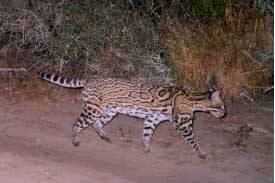Did you know that more than 10 percent of the international border between the United States and Mexico is shared with several National Wildlife Refuges including Santa Ana, Buenos Aires, Cabeza Prieta, San Bernardino, Lower Rio Grande Valley, San Diego and Tijuana Slough?
In January, during the federal government shutdown, I spent three weeks on detail to a South Texas refuge, the Santa Ana National Wildlife Refuge, located in Hidalgo County, Texas. The refuge, established for the protection of migratory birds, sits on the international border, right on the Rio Grande.
I met and worked with Federal Wildlife Officers for Santa Ana refuge, and the many Border Patrol Agents who patrol and protect this part of our southern border. It was an experience, and very different from working as a Federal Wildlife Officer in Alaska.
The Federal Wildlife Officers I met work closely with the Border Patrol and often deal with the issue of illegal activities such as smuggling and drugs. I learned that the Border Patrol uses a variety of means to protect and to monitor illegal activities along the border such as manpower, barriers, sensors, cameras, drones and air support.
The nearly 2,000-mile-long southern border traverses some the continent’s most biologically diverse regions, including grasslands and salt marshes. The border is home to more than 1,500 native animal and plant species, according to an article published in the journal BioScience last year.
The authors, which include an A-list of internationally acclaimed ecologists, estimate that 17 percent of the 346 species they analyzed were at risk of being extirpated on the United States side if these habitats are further fragmented.
Intertwined with private farmed lands, Santa Ana refuge is a mix of riparian and forest habitats that support an astounding number of species. In 1880, there were roughly 2,000 acres of cultivated land in Hidalgo County, and by 1924, that figure grew to 125,000 acres. By 1943, the year Santa Ana refuge was established, it had become an island of remnant habitat in a sea of croplands.
Less than 2,100 acres in size, Santa Ana refuge is home to over 200 species, including a few that are endangered, like the ocelot, a small jaguarlike cat. In 1979, Santa Ana refuge pitched an idea to preserve the fragmented habitat by creating travel corridors for wildlife species.
The refuge aimed to stitch together disjointed pieces of natural habitat into a whole cloth of habitat that could save an expansive community of imperiled species, according to Ken Merritt, former refuge complex manager.
Just 50 to 80 ocelots remain north of the border, mostly constrained to an isolated population in Southeast Texas. Working with private landowners, nonprofit organizations, volunteers, and other government agencies, Santa Ana refuge, along with the Laguna Atascosa refuge, would become critical strongholds for species like the ocelot, and protect the remaining riparian thorn forest in the United States.
Unfortunately, I did not get a glimpse of this beautiful cat. I did see, however, some of the diverse bird life that utilizes this small gem of a refuge but important piece of landscape, including a chunky looking green kingfisher, plain chachalacas, Harris’s hawks and several warbler species.
And though I was hoping to spot an indigo snake, I admittedly found myself looking down often to avoid a surprise encounter.
Santa Ana refuge is just one of more than 560 refuges in the National Wildlife Refuge System, which stretches across 150 million acres, from Puerto Rico to Guam and north to Alaska.
Similar to what Santa Ana refuge proposed in 1979, Kenai National Wildlife Refuge and the Alaska Department of Transportation and Public Facilities are laying the groundwork for sustaining connectivity in our increasingly fragmented landscape by constructing wildlife-friendly crossings under the Sterling Highway in the form of huge culverts and a bridge.
These structures should provide wildlife a safer avenue to productive habitats on both sides of our increasingly busy roads on the Kenai Peninsula, reducing wildlife mortality and public safety issues.
As Theodore Roosevelt said, “Do what you can, with what you have, where you are.”
Kelly Modla is a Federal Wildlife Officer at the Kenai National Wildlife Refuge. Find more Refuge Notebook articles (1999-present) at https://www.fws.gov/Refuge/Kenai/community/Refuge_notebook.html.

